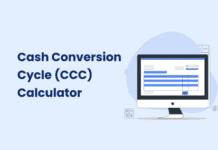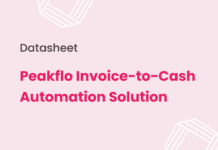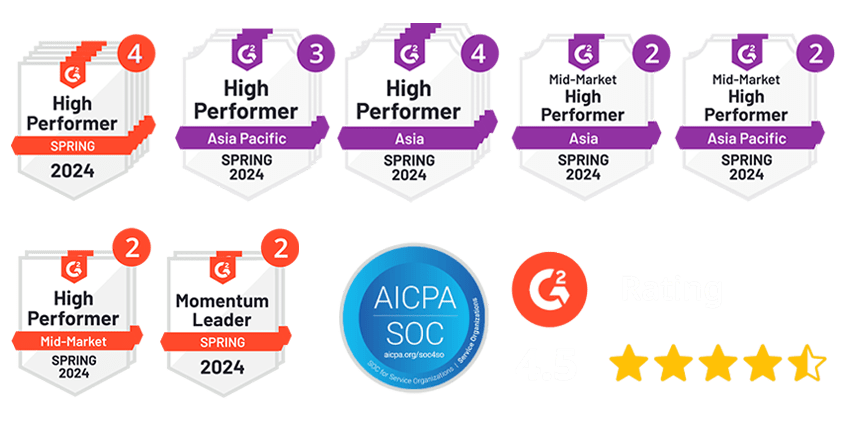Are late payments hurting your business? Do you spend too much time chasing overdue invoices? If so, you are not alone. Many real estate companies struggle with accounts receivable. Delayed payments disrupt cash flow and create financial stress. Without a solid process, your business can lose money and waste time.
Real estate accounts receivable is more than just tracking unpaid rent. It affects your entire business. Missed payments make it harder to cover expenses. Errors in invoicing or collections can cause legal trouble. Poor tracking leads to lost revenue. These issues add up fast.
The good news? You can fix this. A clear system for handling payments keeps your business stable. It helps you avoid late fees, reduces financial risk, and keeps customers happy.
This blog will show you how to manage real estate accounts receivable the right way. You will learn how to collect payments faster, prevent errors, and improve cash flow. Keep reading to take control of your revenue.
What Is Accounts Receivable in Real Estate?
Accounts receivable is the money a business is waiting to collect. In real estate, this includes unpaid rent, lease payments, or property management fees. If a customer does not pay right away, the balance they owe is recorded as real estate accounts receivable.
For example, imagine a company that owns an office building. Several businesses rent space there. Each tenant agrees to pay rent on a set date every month. If one tenant misses the payment, that amount becomes part of the company’s accounts receivable. The longer it goes unpaid, the bigger the financial risk.
Keeping track of these payments is essential. If a real estate business does not have a system in place, it can lose money. Delayed payments lead to cash flow issues. Invoicing mistakes create confusion. Poor tracking makes collections harder.
A well-managed accounts receivable process prevents these problems. It helps businesses collect payments on time, reduce financial risk, and keep revenue steady.
Types of Receivables Specific to Real Estate Transactions
Real estate accounts receivable include different types of unpaid balances. Property owners, landlords, and management companies rely on these payments to keep cash flow steady. Delays or missing payments can cause financial stress. Understanding the following receivables helps businesses stay organized and avoid revenue loss:
1. Rental Income Receivables
This includes rent payments from tenants. The balance is recorded as accounts receivable if a tenant does not pay on time. Property owners and landlords must track these payments to prevent cash shortages.
2. Lease Payment Receivables
Leases often require payments for base rent, utilities, or maintenance. Some agreements allow tenants to pay in installments. If a payment is missed, the outstanding amount becomes a receivable.
3. Property Management Fee Receivables
Property managers charge fees for handling rentals. These fees cover services like tenant screening and maintenance. If an owner does not pay on time, the unpaid amount is recorded as receivable.
4. Common Area Maintenance (CAM) Charges
Many commercial properties have shared spaces like lobbies and parking lots. Landlords charge tenants for maintaining these areas. If a tenant does not cover their share, the balance is recorded as accounts receivable.
5. Security Deposit Adjustments
Security deposits cover unpaid rent or property damages. When a tenant moves out, part of the deposit may be applied to outstanding charges. If additional money is owed, it is recorded as a receivable.
6. Late Fees and Penalties
When tenants miss rent or other payments, landlords may charge late fees. These fees are added to the total balance and must be collected.
7. Real Estate Commission Receivables
Real estate agents and brokers earn commissions on sales and leases. Sometimes, these payments are delayed. Until paid, the commission remains receivable.
Key Components of Real Estate Accounts Receivable
Real estate accounts receivable is not just about keeping track of unpaid rent or service fees. It is about making sure payments come in on time, avoiding cash flow problems, and keeping tenant relationships smooth. Here are the key pieces that make it work.
1. Clear Lease and Payment Terms
Getting paid on time starts with strong lease agreements. Every contract should spell out payment amounts, due dates, late fees, and accepted payment methods. If terms are vague or incomplete, tenants may miss payments or argue about what they owe. Setting clear expectations upfront prevents confusion and late payments down the road.
2. Simple and Accurate Invoicing
If invoices are hard to understand or full of errors, payments will be delayed. Every bill should clearly show the amount due, the due date, and instructions for payment. Sending invoices on time is just as important. If tenants do not receive bills when they expect them, they might put off paying or forget altogether.
3. Easy Payment Options
The easier it is to pay, the faster you will get your money. Offering online payments, automatic bank transfers, and credit card processing speeds up collections. Relying on checks or cash slows things down and increases the risk of late or lost payments.
4. Accounts Receivable Aging Reports
Not every payment will come in on time, which is why tracking overdue accounts is essential. An aging report shows how long invoices have been unpaid and which accounts need attention. Catching late payments early gives businesses time to act before the situation gets worse.
5. Late Fees and Collection Policies
Nobody likes chasing down overdue payments, but it is part of the job. A strong accounts receivable system includes clear rules on late fees and collection steps. Tenants need to know what happens if they pay late—whether it is a penalty fee, extra interest, or a more serious action if the balance remains unpaid.
6. Handling Payment Disputes
Sometimes, a tenant may question a charge or claim they already paid. When this happens, a structured process for handling disputes can prevent long delays. Quick responses, detailed records, and clear communication make it easier to resolve issues and collect payments faster.
7. Keeping Accurate Records
Every invoice, payment, and late fee needs to be recorded properly. Good record-keeping helps track unpaid balances, simplifies tax reporting, and protects businesses in case of legal disputes. Without organized records, payments can slip through the cracks, leading to lost revenue and financial headaches.
Challenges in Managing Real Estate Accounts Receivable
Getting paid on time in real estate is not always simple. There are delays, disputes, and unexpected roadblocks that disrupt cash flow. One missed payment might not seem like a big deal, but financial pressure builds quickly when multiple accounts fall behind. Managing real estate accounts receivable comes with unique challenges that property owners and managers face daily.
1. Late and Missed Payments
Not every tenant pays on time. Some delay payments due to financial struggles, while others simply forget. When payments do not arrive as scheduled, it affects everything—operating expenses, maintenance budgets, and even mortgage obligations. The longer an account remains unpaid, the harder it becomes to recover the balance.
2. Juggling Different Revenue Sources
Real estate income does not come from a single source. Property owners collect rent, lease payments, maintenance fees, and sometimes even commissions. Keeping track of different revenue streams is challenging, especially when payments come in at different times. Without an organized system, it is easy to lose track of what is owed.
3. Disputes Over Charges
Billing errors, unexpected fees, or miscommunications can lead to disputes. A tenant might argue over a late fee or claim a repair charge is too high. These disagreements slow down collections and take time to resolve. When disputes pile up, they can cause major delays in cash flow.
4. Inconsistent Payment Methods
Some tenants prefer online transfers, while others still mail paper checks. A few may even try to pay in cash. Managing multiple payment methods creates challenges in tracking and reconciliation. Paper checks take days to process, and cash payments require extra steps for documentation. Without a seamless system, payment delays become more common.
5. High Delinquency Rates
Some tenants fall months behind on payments, making collections difficult. Unpaid balances stack up, leaving property owners with financial gaps they did not plan for. The longer an account stays overdue, the less likely it is that the full amount will ever be recovered.
6. Errors in Billing and Record-Keeping
A small mistake in an invoice can cause big problems. If a tenant receives the wrong amount on their bill, they might refuse to pay until it is corrected. Poor record-keeping makes it difficult to track outstanding balances, leading to missed payments or duplicate charges. Even small errors can create major financial setbacks.
7. Legal and Compliance Risks
Real estate businesses must follow strict rules when handling deposits, late fees, and collections. If a landlord or property manager does not comply with regulations, they could face fines or legal action. Mishandling accounts receivable does not just hurt cash flow—it can also lead to expensive legal consequences.
Best Practices for Effective AR Management
Managing real estate accounts receivable is about more than just collecting rent and fees. A slow or inefficient process can cause cash flow problems and strain business operations. The right approach keeps revenue steady, reduces disputes, and makes collections smoother. Here is what works best:
1. Set Payment Terms That Leave No Room for Confusion
Delays happen when tenants are unsure about due dates, penalties, or payment methods. Every lease should spell out exactly when and how payments must be made. Make it simple. If the terms are easy to understand, there will be fewer missed payments and fewer excuses.
2. Automate Invoicing to Stay on Track
Manually sending invoices takes too much time. It also leads to mistakes. An automated system ensures bills go out on time, every time. Set up automatic reminders so tenants never forget a due date. The fewer delays, the better your cash flow.
3. Give Tenants More Ways to Pay
If paying rent is difficult, tenants will put it off. Offering multiple options—such as online portals, bank transfers, and credit cards—makes it easier for them to pay on time. Avoid relying on paper checks, which slow things down and create tracking issues.
4. Watch Overdue Accounts
Not every tenant will pay on time. The longer a bill sits unpaid, the harder it is to collect. An aging report tracks how long invoices have been overdue. Checking it regularly helps you act before accounts spiral out of control.
5. Stick to a Collection Plan
Chasing payments randomly never works. A structured collection process keeps everything under control. Start with a friendly reminder. If that does not work, send a formal notice. If needed, escalate further. Following a clear plan ensures that no overdue account slips through the cracks.
6. Keep Records That Tell the Full Story
Messy bookkeeping leads to missed payments and billing disputes. Every transaction should be logged accurately. Payments, invoices, late fees—everything should be documented. Good records help solve disputes quickly and protect your business from financial loss.
7. Act Fast on Late Payments
Waiting too long to follow up on a missed payment is a mistake. A quick call or email can fix the issue before it becomes a bigger problem. A simple reminder often works better than waiting weeks to send a warning notice. When tenants see that payments are tracked closely, they are less likely to fall behind.
8. Improve the Process Over Time
A system that works today may not work well a year from now. Reviewing AR processes regularly helps spot weaknesses before they cause major issues. Whether updating software, tweaking payment policies, or improving communication, small changes can lead to big improvements.
Role of Technology in Enhancing AR Efficiency
Managing real estate accounts receivable manually is like driving with a blindfold—you never really know where you stand. Payments get delayed, invoices pile up, and tracking who owes what becomes a guessing game. Technology solves these problems by bringing clarity, speed, and control to the process. Here is how:
1. Invoices Are Sent and Processed Faster
Waiting on checks to clear or tenants to remember their due dates slows down cash flow. Automated invoicing ensures bills go out on schedule. Tenants receive instant notifications, and businesses can track when invoices are viewed and paid. Faster invoicing leads to faster payments.
2. Payment Portals Make It Effortless for Tenants
Giving tenants an easy way to pay removes excuses for late payments. Online payment portals allow them to pay through credit cards, ACH transfers, or mobile apps—all in just a few clicks. The result? Less waiting, fewer delays, and more on-time payments.
3. Real-Time Tracking Keeps Accounts in Check
Instead of scrambling through spreadsheets, AR software gives property owners an instant view of outstanding balances. Who has paid? Who is late? What is overdue? Everything is visible in real-time, making it easy to follow up on unpaid accounts before they become a problem.
4. Smart Late Fee Triggers Keep Payments on Schedule
No one enjoys sending collection notices. Automated systems handle late fees and past-due reminders without the need for awkward phone calls. The moment a payment is overdue, the system applies penalties and sends a notification, keeping tenants accountable.
5. Digital Records Protect Against Billing Disputes
A missing invoice or a forgotten payment can lead to frustrating disputes. Technology removes the guesswork by keeping digital records of every invoice, payment, and communication. If a tenant questions a charge, businesses can pull up the exact details in seconds.
6. Predictive Analytics Help Prevent Late Payments
Some tenants consistently pay late. Instead of reacting when accounts become overdue, AI-powered tools predict which accounts are at risk. This allows businesses to take action early—whether by sending extra reminders or adjusting payment terms—before cash flow is affected.
Peakflo: The Ultimate AR Automation for Real Estate Businesses
Managing real estate accounts receivable is not easy. Late payments, invoicing errors, tracking disputes, and endless follow-ups make it a time-consuming nightmare. But what if there was a smarter way to handle everything—without the hassle?
Meet Peakflo, one of the most trusted AR automation solutions that makes getting paid faster, easier, and stress-free for real estate businesses. Whether you manage rental properties, commercial leases, or property management fees, Peakflo streamlines your entire AR process so you can focus on growth, not collections.
1. Get Paid Faster with Proforma Invoice Validation
Before sending out invoices, Peakflo lets you validate proforma invoices professionally. Clients can review invoices, raise disputes (even on line-items), and accept them in a single click.
Why It’s a Game-Changer for Real Estate:
Property owners, landlords, and real estate firms often deal with billing disputes—from unclear maintenance fees to lease charge disagreements. Peakflo solves this upfront by letting tenants validate invoices before they become a problem, reducing collection delays.
2. Automate Your Invoicing—No More Manual Work!
Creating and sending invoices manually wastes valuable time. With Peakflo, you can generate professional GST tax invoices, set approval workflows, and even add e-signatures with ease.
Why Real Estate Businesses Need This:
Managing hundreds of lease agreements, service charges, and rental invoices can lead to errors and payment delays. Peakflo automates everything, so your finance team spends less time on paperwork and more time on strategic work.
3. Supercharge Your Collections Team with CRM Features
Tracking overdue accounts with spreadsheets? That’s history. Peakflo gives your collections team a CRM-like platform with task management, query tracking, and real-time KPI monitoring.
Why It’s Perfect for Real Estate:
Whether it’s following up on unpaid lease payments or responding to tenant inquiries, Peakflo keeps everything organized. Your team never misses a task, reply, or collection opportunity, ensuring rent and service payments come in on time.
4. No More Manual Payment Reminders—Automate Everything!
Stop wasting time sending individual reminders. Peakflo allows you to categorize customers, set up automated workflows, and send personalized reminders across multiple channels.
Why Real Estate Firms Love This:
Late payments are a constant issue in real estate. With Peakflo, you can automate payment follow-ups and ensure tenants receive reminders at the right time, on the right platform.
5. A Self-Service Customer Portal for Hassle-Free Payments
Give tenants and property owners a single place to manage payments, disputes, and invoices. The self-service portal allows customers to track all their payables, communicate with their finance team, and make payments instantly.
How This Helps Real Estate Businesses:
Managing multiple properties means handling dozens of inquiries and payment issues daily. Instead of endless emails and calls, tenants can resolve disputes, check invoices, and pay—without your team lifting a finger.
6. Get Real-Time Insights to Stay on Top of Your Finances
Tired of manually tracking receivables? Peakflo’s AI-powered reporting gives you instant visibility into invoice payments, customer balances, and collection KPIs with dynamic reporting.
Why It Matters for Real Estate:
Real estate businesses deal with complex financials—rent collection, lease payments, property management fees, and more. With Peakflo, you get a real-time overview of your cash flow and can make data-driven decisions without spending hours on reports.
- Say Goodbye to Manual Cash Application
Matching payments to invoices can be a nightmare—especially when clients make bulk payments. Peakflo automates this with an AI-powered cash application, ensuring every payment is matched, tracked, and reconciled instantly.
Why Real Estate Companies Need This:
Collecting multiple payments from tenants and vendors often leads to confusion and misapplied funds. Peakflo’s automated cash application removes errors, ensuring that every payment is applied correctly—without manual effort.
Conclusion
Keeping real estate accounts receivable under control is tough, but the right system makes it easier. Clear invoicing, smart tracking, and automated collections help businesses avoid cash flow issues and reduce payment delays. Instead of chasing overdue balances, real estate teams can stay focused on what matters—growth and stability.
That is exactly what Peakflo delivers. With automated invoicing, seamless payment tracking, and an easy-to-use customer portal, you can cut out the manual work, speed up collections, and get paid on time—every time.
See it in action. Take a free demo tour today and discover how Peakflo can transform your AR process!









![Why AI Sales Calls Are Making Good Sales Reps Even Better [2025 Guide] ai sales calls](https://cdn-kmjmp.nitrocdn.com/YvtqmrsiHUxqerlSiZgbfzqqTARWTElr/assets/images/optimized/rev-834053b/blog.peakflo.co/wp-content/uploads/2025/09/65168cf6-3001-4733-8cbc-12d5684cf449-218x150.webp)

































